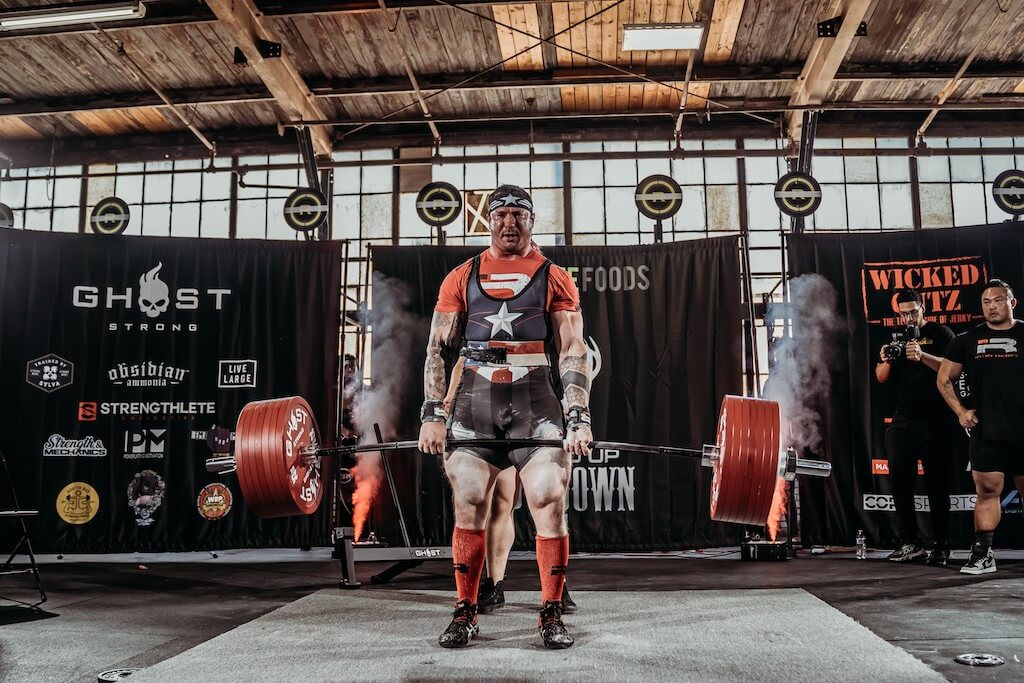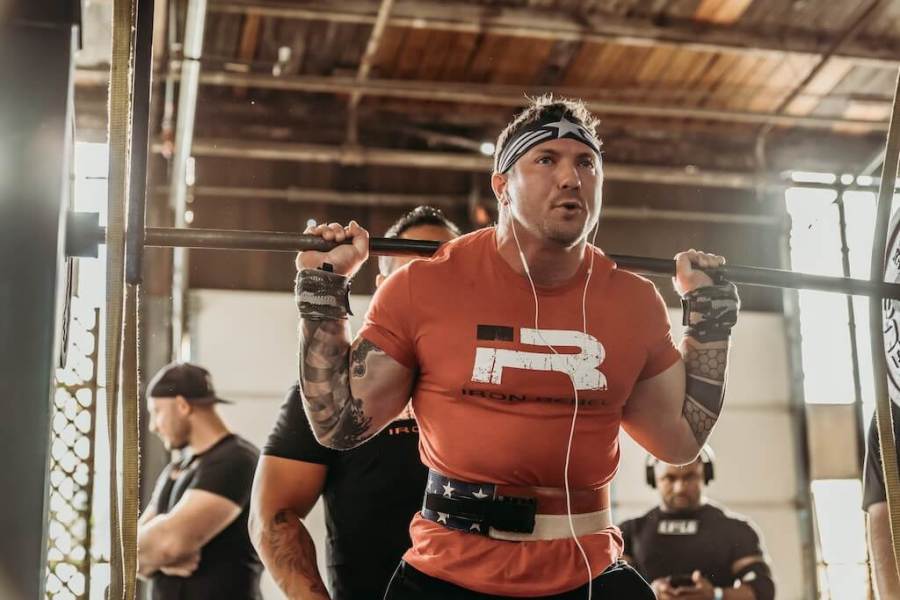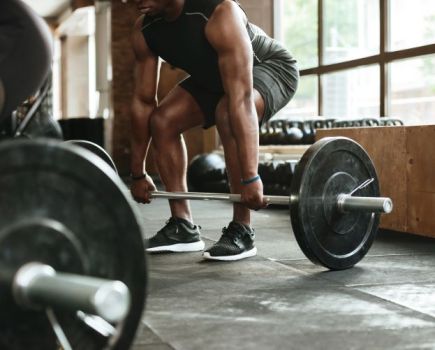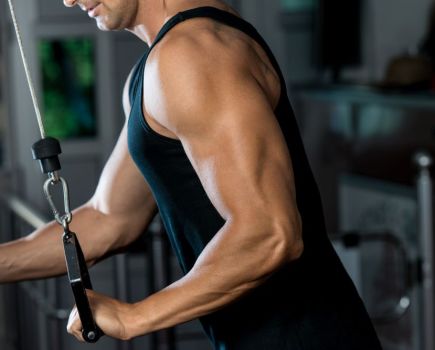John Haack is the world-record-breaking powerlifter who also holds down a full-time job – we caught up with him to get his top strength training tips.
Whether you train with your favourite kettlebells at home or hit the resistance machines in the gym, these tips from powerlifter John Haack are sure to upgrade your strength training regime. John ‘Bilbo Swaggins’ Haack is not the tallest or the heaviest powerlifter, but pound for pound the 28-year old American is certainly one of the world’s strongest.
In September 2021, he set a new world record in the raw (without knee wraps) 90kg bodyweight class. Haack managed a combined one-rep max total in the squat, bench press and deadlift of a massive 1,005.5kg (340 kg squat, 263kg bench press, 402.5kg deadlift). Not only did this effort smash his own previous world record (set in 2019) by almost 70kg, it also beat the raw records of the guys in the 100kg and 110kg class for good measure.
Despite punching so far above his weight, and knowing how to put it all on the line when competing at the highest level, Haack is unassuming and relaxed in person, and still holds down a full-time day job as a chemist.
Men’s Fitness caught up with the Brawn athlete to ask how he does it, and how we can all learn from his lifting prowess, to achieve our own gym goals, faster.

Haack deadlifts 402.5kg at the World Raw Powerlifting Federation Showdown
John Haack on how he got into powerlifting
John Haack always knew he was strong (he started lifting at the tender age of ten), but his heroes weren’t the Arnies and Ronnie Colemans of the world. “I grew up watching World’s Strongest Man on ESPN,” he says, “seeing Mariusz Pudzianowki and Bill Kazmaier, so I’ve always had a fascination with strength over aesthetics.”
Despite having a gift for lifting heavy, he was hesitant to take it to the next level and actually attend a powerlifting meet – he had to be persuaded: “I didn’t think I would be able to compete against these guys, but ended up being very good at it. That was a lesson for me and something I’d say to anyone: just go for it, you might end up being better than you think you are.”
If he started out with low self-belief, then experience has taught Haack to set the bar as high as it will go. “My goal was the 1,000 kilos,” he says. “I know that records by themselves are going to be broken, but milestones are the kind of things that are going to be remembered. And I always wanted to be the first 90kg lifter to hit the 1,000kg barrier.”
How injury affected John Haack’s career
The dream, however, almost turned to disaster when Haack was pushing hard on the lift he wouldn’t call his strongest: “On my third squat I ended up slightly tearing both my quads, so that kind of affected my bench and deadlift for the rest of the meet.” (You don’t say!)
Unsurprisingly, damaging such a key muscle made Haack think his world-record bid was over, but he kept plugging away. “After messing up my legs I was pretty down,” he says. “I didn’t think the 1,000 kilograms was going to be there, but I ended up pulling through and just kept chipping away at what I needed for the rest of the meet.”
After smashing his own record, it occurred to Haack that he might been able to take it even further, given he wasn’t able to perform at 100% on his strongest lifts: “I do think I have a little bit more in the tank on those…”
View this post on Instagram
Mental focus & limits in powerlifting
As well as staying strong when things are not going your way, Haack is well acquainted with the level of mental focus you need to push past your limits. But he also knows it’s a finite resource:
“You have to pick and choose where you’re going to put your mental focus. Some people get super hyped up before a warm-up set, but I feel like they’re the people who burn out pretty quickly. I’m known as a calm lifter. But it’s just that I stay calm for 99% of my lifts and then have a hyped-up focus for the top 1%, usually on meet day.”
Haack doesn’t seem like the kind of guy to get unnecessarily excited, but it’s a fine line between calm and collected, and going off the boil.
“There’s a scene in X Men First Class,” he explains, “where Professor Xavier is explaining to Magneto that the key to focus is somewhere between rage and serenity. I was like, ‘That’s exactly how I feel!’ I’m calm, but my vitals are elevated. It’s clear mind, but almost like a rage. It’s hard to explain…”
Perhaps bossing his sport, while also holding down a full-time career as a chemist, enables him to remain grounded? “It’s not that hard of a sport to balance, because it’s basically just lifting,” he says, modestly, “which is what the vast majority of people do working out. I’d probably get really bored if I didn’t have a job outside of lifting, because it’s only two or three hours a day that you’re in the gym.”
John Haack on how to become a powerlifter
Whatever your goals in the weights room, it’s important to spend some of your time working out for strength. So we asked Haack, what’s the main skill you need to be a powerlifter?
“Patience is one of the biggest things,” he says. “A lot of people get their newbie gains, and think that’s going to be a sustained thing. You’ve got to learn to accept that progress does slow down, and you have to keep being consistent with what you’re doing.”
While you can skip a couple of workouts here and there, doing so regularly will cause your progress to fall off. And when you’re starting any lifting programme, it pays to focus on your own performance, rather than others.
“I’m always very competitive,” says Haack, “so I do compare myself to others, but at the end of the day, I’m comparing myself to where I was last training cycle. Am I better now? If not, what do I have to adjust to make sure I’m becoming better?”
We are all individuals, and Haack recommends experimenting with a powerlifting or bodybuilding programme. “Take notes on it,” he says, “write down everything and figure out what parts of different programmes work for you. As you progress you’ll start to hone in on what works for you specifically.”
Making time for rest and recovery
Of course, you also have to allow your body time to recover. “Knowing your body is important,” says Haack. “I haven’t had any catastrophic injuries, and when you’ve been doing this long enough you know the signs of when something’s going to go. That’s when you have to pull back and just do regular de-loads to let your muscles, tendons and joints recover.” (He de-loads about every six weeks, but recommends de-loading every four weeks to start with, then pushing it out further if you want.)
View this post on Instagram
John Haack’s strength training schedule
In order to get into record-setting form, Haack is in the gym five days out of seven. “I treat Saturday as my first day of the week,” he says, “because that’s usually my heaviest day. It’s a squat and bench day, and I typically work up to a moderately heavy single rep.”
He takes Sunday off, then Monday is his heavy deadlift day, where once again he works up to a heavy single rep, after which he does accessory exercises that target a weak point: “So for the bench, if my triceps are lagging, I’ll take a close-grip bench press, and maybe some dumbbell exercises to push off.”
Tuesday is a rep bench day for Haack, working in the 4-8 rep range, followed by accessory exercises with a barbell movement similar to the bench. Wednesday is a squat rep day, then Thursday is another bench day, “focusing on a lighter weights and more speed to get blood flow going – I do a lot of upper body accessory exercises that day.”
Rather than sticking to a rigid plan of total sets, Haack uses how he feels to ‘auto-regulate his training volume: “So if I did my Tuesday bench day, and went kind of hard, maybe on the next bench day I will pull back a little bit, and instead of doing four sets, I’ll do two or three, and it might be with a lighter weight.”
Listening to your body
If you’ve been inspired to lift for strength, or even try powerlifting, Haack says it’s important to look at the fine details. “Watch guys at the top level,” he says, “but who you feel are similar in natural body shape to you, to see what kind of cues they’re doing – a little bit of a wider stance, for instance. I’m a big fan of listening to your body and going with what feels the strongest.”
When lifting at your maximum, there’s a fine line between giving it your all and risking injury. “You have to know when to pull back and when to press on the gas,” says Haack. “As a beginner, it’s hard to do that, so I would recommend getting a coach, or at least a solid programme.”
Haack says it will also pay dividends to train to the standard applied by judges in the powerlifting meets. If you never pause at the bottom of a bench press, for example, start now. “It’s going to generally make the lift harder,” he says, “so it’s better to practice how you play.”
Strength training tips from John Haack
SQUAT TIPS
- Grip as close to your shoulders as your mobility will allow for.
- Squeeze everything in tight, pull your shoulder blades together to create a strong self for the bar to rest on.
- Try to push your elbows forward to lock everything in, making your upper back ridged to better translate force into the bar.
BENCH TIPS
- To generate maximum force, you must utilise your entire body with a leg drive.
- A lot of beginners misunderstand how to use their legs, and drive their feet straight down into the ground, causing their hips to rise off the bench.
- The correct way is to try and use the friction of your shoes to leg press the ground away from you, pushing your body in the direction of your spotter.
- Try this just sitting in a chair – push your feet away from you and you’ll push yourself into the back of your chair.
- This technique will help create tightness and force coming off your chest.
DEADLIFT TIPS
- A lot of people are intuitively doing deadlifts incorectly.
- It seems lifters follow the cue of treating the hips as a pivot point and trying to bring your shoulders, along with the bar, back.
- A better way, in my opinion, is to try and bring your hips to the bar.
John Haack took part in the first ever global powerlifting virtual event hosted by Brawn: the community app for strength athletes. The Brawn app is free to download. Find out more at brawn.co.uk/virtual-events
Words: Matt Ray








